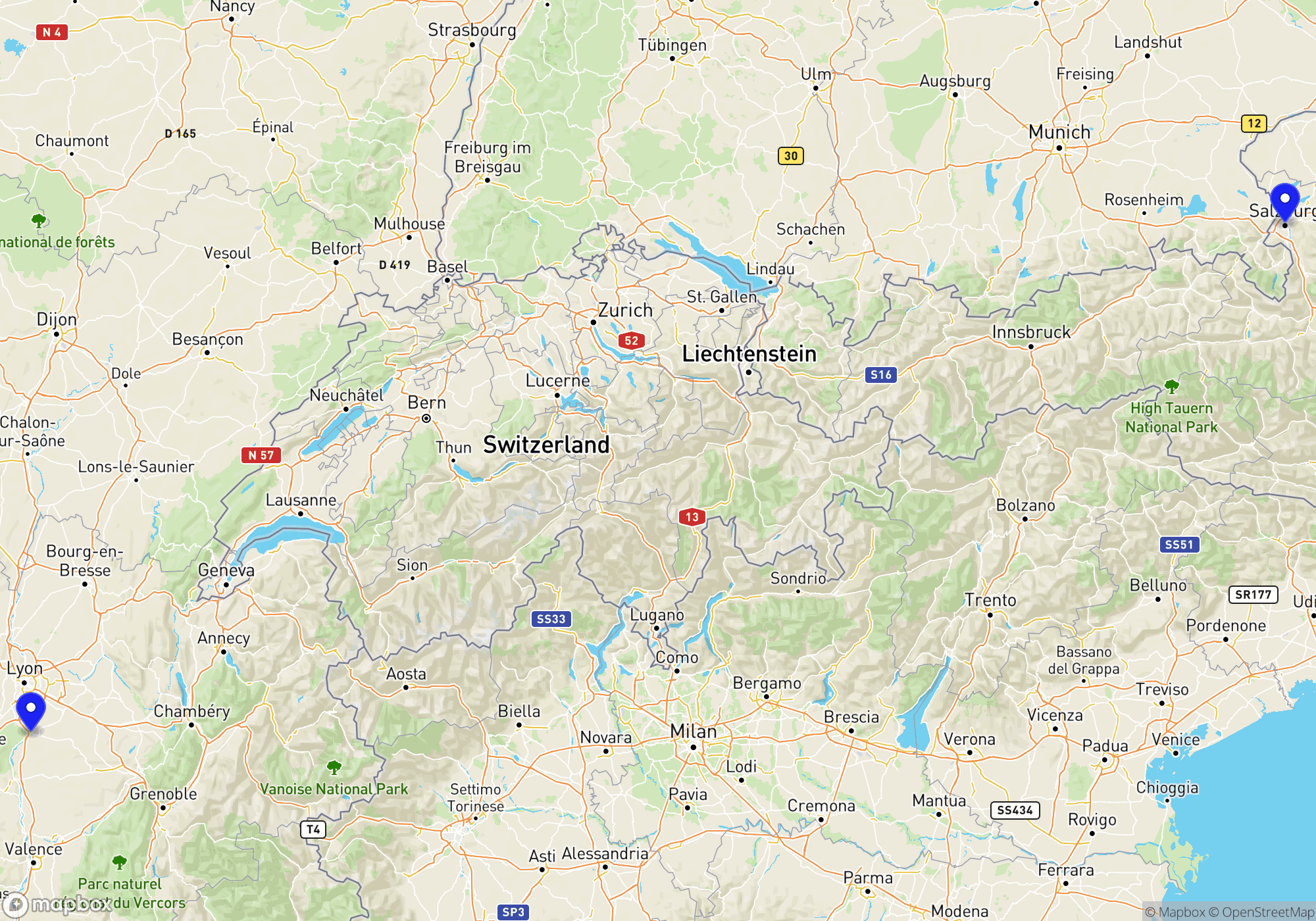
You can buy train tickets directly from the operator or through a reseller. The reseller is typically slightly more expensive (3-5%) but can provide an easier booking experience, especially if you travel with more than one operator.


These operators provide a complete journey either as a direct connection or through their partners. Even if a change of trains is involved, it’s all part of a single itinerary managed by the same train company or its partners, offering a smoother and more coordinated travel experience.

Some operators don’t run direct trains the whole way, but they serve either the departure or arrival station. In many cases, you can combine two of these operators to complete your journey by changing trains along the way. This is often a flexible and budget-friendly way to travel — especially if you’re comfortable piecing together your own itinerary.
Just keep in mind that these are separate journeys, which means a delay on the first leg could cause you to miss the second without automatic compensation or rebooking. It’s a great option for confident travelers who don’t mind a bit of extra planning.


FlixBus is primarily known as a long-distance bus company and does not operate as a rail company. However, for train travel between Vienna and Salzburg, the main rail operators are ÖBB (Austrian Federal Railways) and Westbahn. ÖBB offers high-speed Railjet trains and InterCity services, which provide comfortable seating, free Wi-Fi, and onboard dining options. Railjet trains are known for their modern design, featuring First and Economy Class, with First Class offering at-seat meal service and complementary drinks. Customer support is accessible online, over the phone, and at ticket counters in train stations. Westbahn offers a more budget-friendly alternative, operating double-decker trains with spacious seating, power outlets, and Wi-Fi. Passengers can choose between WESTsaver and WESTstandard classes. Westbahn customer support is available through their website and over the phone. Both operators offer efficient and frequent services tailored to meet the needs of different types of travelers.
The Interrail Global Pass is generally valid for international and domestic travel within Europe, including travel from Vienna to Salzburg. However, it is not valid for residents of the country in which travel is taking place, so if the traveler is a resident of Austria, this pass would not be applicable. The Interrail One Country Pass for Austria would allow for train travel between Vienna and Salzburg if the traveler is not a resident of Austria. The Eurail Pass can be used by non-EU residents for travel between Vienna and Salzburg, as it is designed for those who are not residents within the EU.
Upon arriving in Salzburg by train, you’ll likely find yourself at the Salzburg Hauptbahnhof, the main railway station. From here, getting around the city using local transportation is quite convenient. Salzburg does not have a metro system, but it does have a well-organized network of buses. You can take the Salzburg StadtBus, which is operated by Salzburg AG, and covers all parts of the city. The lines are numbered, and you can catch buses directly from the Hauptbahnhof. For more remote areas, you might use regional buses that connect the outskirts with the city center. Taxis are readily available at designated taxi stands outside the train station and throughout the city. Salzburg also offers ridesharing services with companies like Uber, providing a convenient alternative to traditional taxi services. If you prefer a bicycle, there are bike rental services, including rail and rent options at the Hauptbahnhof. Simply follow the city’s well-marked bike lanes to explore Salzburg’s scenic routes comfortably on two wheels.
Salzburg is a well-connected hub for both domestic and international train travel. Domestically, one of the most popular rail connections is between Salzburg and Vienna. This route is efficiently serviced by ÖBB Railjet and Westbahn trains, offering frequent departures and taking approximately 2.5 hours. Another important domestic connection is to Innsbruck, serviced by ÖBB trains, with scenic routes through the Alps, taking about 2 hours. For international travel, Salzburg to Munich is a popular route, accessible through Deutsche Bahn (DB) services, providing frequent and direct options with travel times around 1.5 hours. Zurich, Switzerland, is another key international connection, served by Railjet and EuroCity trains, taking approximately 5.5 hours. Additionally, trains to Venice, Italy, offer a scenic journey with multiple connections, primarily via ÖBB, taking around 7 hours. These routes underscore Salzburg’s strategic location as a gateway to both Austrian destinations and neighboring countries.
The best time to visit Salzburg primarily depends on what you want to experience. For pleasant weather, late spring (May) and early autumn (September) are ideal, offering mild temperatures and fewer tourists compared to the summer peak. During these months, you can enjoy outdoor activities and the beautiful Alpine scenery without the summer crowds, and prices for accommodations and travel, such as train fares, may be slightly lower. If you’re interested in festivals, visiting in July and August allows you to experience the renowned Salzburg Festival, though these months can be crowded and more expensive. For those who enjoy winter activities and festive atmospheres, December is perfect for exploring Salzburg’s charming Christmas markets and enjoying the potential for snow, while January and February offer opportunities for winter sports nearby. Trains to and from Salzburg tend to be well-connected year-round, but booking tickets in advance during peak seasons can help secure better prices.
When traveling from Vienna to Salzburg by train, it is essential to pack a few key items to ensure a smooth journey. Bring a valid passport or national ID card, especially if you’re an EU citizen since it’s required for identification. An Austrian rail pass or your train ticket, whether printed or available on a mobile device, is necessary for boarding the train. Considering comfort and entertainment during the journey, pack books, magazines, or electronic devices with downloaded content, as the Wi-Fi may not always be reliable. Austrian trains typically have European standard type F plugs, so it’s a good idea to carry a power bank or a type F power adapter for your devices. Since snacks and drinks can make your trip more enjoyable, consider bringing some light refreshments, though they are available for purchase on the train. For your time in Salzburg, plan for varying weather, so pack a light rain jacket and comfortable walking shoes to explore the city. Also, include a reusable water bottle to stay hydrated while sightseeing. A camera or smartphone will be useful for capturing the picturesque landscapes and historic sites. A travel guidebook or downloaded app can enhance your visit by providing insights into local attractions and culture.